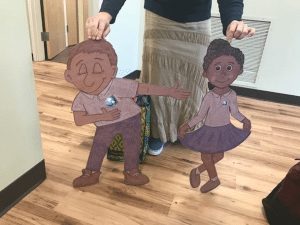Montessori Knobless Cylinders

The Montessori knobless cylinders are 4 sets of 10 wooden cylinders each in a different color. The knobless cylinders are identical sets to the knobbed cylinders, except for the knobs and the colors, and they can fit into the four-cylinder blocks.
The knobless cylinders are parts of the sensorial curriculum and they refine visual distinction between the heights and diameters of three-dimensional forms.
What are the 4 Knobless Cylinder Sets?
Each set is as follows:
- Red set: Cylinders vary in thickness and are all the same height (compatible with cylinder block 1)
- Blue set: Cylinders vary in height and are all the same width (compatible with cylinder block 2)
- Yellow set: Cylinders vary in both height and width, with the shortest being the thinnest and the tallest being the thickest (compatible with cylinder block 3)
- Green set: Cylinders vary in both height and width, with the shortest being the thickest and the tallest being the thinnest (compatible with cylinder block 4)
What do the Knobless Cylinders Teach?
As part of the visual sensorial curriculum, the cylinders refine visual discrimination as it applies to the size of objects.
Secondarily, fine motor practice is involved. Unlike the Montessori knobbed cylinders, whose knob is to aid in manipulating and moving the blocks into place, the knobless cylinders require much more agile fingers. They also allow for more creativity and being flat on their end faces, which can be stacked and arranged in a variety of organized manners.
Language and vocabulary are also addressed. The descriptive terms tall, thin, short, and thick are introduced, along with comparatives (taller, thinner, shorter, and thicker) and superlatives (tallest, thinnest, shortest, and thickest) are reviewed.
Completing the Knobless Cylinder Work Cycle
The red set is presented first. To complete the work cycle, the child must first take all cylinders out of their box and set them onto a worktable. Next, he lines them up from thickest to thinnest. During the presentation, as well as after, comparative and superlative language is reviewed (i.e. “Can you show me a thicker cylinder?” or “Which cylinder is thinnest?” After grading the cylinders, the student stands up and looks down at the cylinders.
The next task is to build a tower by placing the thickest cylinder at the base and building up to the thinnest. After building the tower, the child stands above it and looks down.
After the child has mastered the red set, subsequent blocks are presented: blue, yellow, and then green. All towers should be built with the thickest piece at the base, except blue, which should be built with the tallest piece at the base.
There are a variety of combinations following, beginning with comparing the red and green pieces side to side and then green on top of the red. Next is red and yellow, then green and yellow, and then red and blue, after that three boxes at a time, and finally all four.
Control of Error
Every Montessori material has a control of error so that little ones can self-correct. After grading the cylinders or building a tower, the last piece won’t fit if a mistake has been made. The blue tower is the only tricky exception here.


